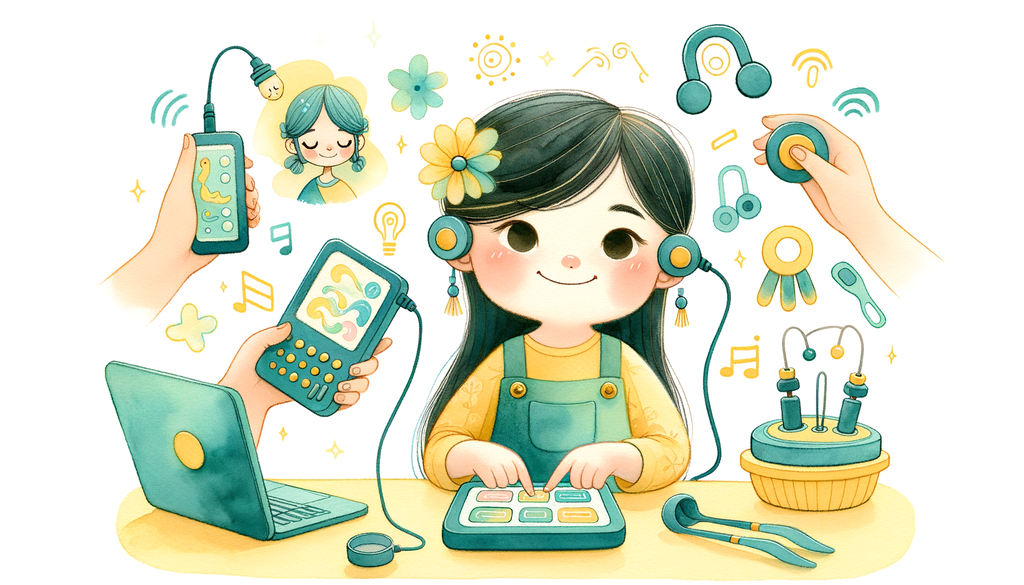Advancing with Assistive Technology: Tools for Special Education

Advances in technology have significantly transformed the field of special education, paving the way for more dynamic and inclusive learning experiences for children with unique learning needs. From supportive software to adaptive devices, let’s delve into the world of assistive technology in special education and explore how these innovations can facilitate learning and engagement.
Assistive Technology: A Game-Changer in Special Education
Assistive technology (AT) refers to tools designed to improve the functional capabilities of individuals with disabilities. In the field of education, AT enables children with special needs to bypass challenges, giving them the means to participate more fully in learning. In the same vein, this technology fosters independence, enabling students to compete on a more level playing field with peers.
Previously, we explored how visual supports enhance learning for non-verbal children. Assistive technology takes this concept to the next level, offering multiple sensory modes to suit different learning styles.
Choosing the Right Assistive Tool
Selecting the most appropriate assistive technology for your child’s needs can be daunting. It’s crucial to consider the child’s needs, abilities, and the nature of the tasks they need assistance with. To aid in this, remember our post on educating yourself as a parent and demonstrating patience when supporting dyslexic learners at home.
Let’s look at a few categories of assistive technologies and how they can be used in specialized learning.
Specialized Computer Software and Hardware
Computer technology has proven to be a significant force in special and inclusive education. A wide array of specialized software and hardware exists to aid learners who cope with challenges ranging from physical limitations to learning difficulties.
-
Text-to-speech and speech-to-text software: For students with dyslexia or other reading difficulties, text-to-speech software can read out text from digital devices. Similarly, speech-to-text software helps children who struggle with writing by transcribing their spoken words into typed text.
-
Keyboard and mouse adaptors: These tools assist children with physical challenges who may find traditional computer peripherals difficult to use.
-
Visual software: This software aids children with visual impairments, ensuring they can engage with digital content.
-
Learning and study aid software: Apps and platforms offer features like color-coded notes, reminders, and customizable learning resources.
Electronic Aids
These tools help children with communication challenges to express their thoughts and needs more effectively.
-
AAC Devices: Augmentative and alternative communication (AAC) devices assist children with speech and language challenges. From simple picture boards to complex software that generates voice output, AAC devices support expressive communication.
-
Switches: These devices control actions on computers or communication devices using motors. They help children with mobility issues operate technology using simple movements.
Tactile and Sensory Tools
Tactile and sensory tools allow children to engage with their senses for a more enriched learning experience. We previously explored sensory play for special needs children, and these tactile tools can be seen as an extension of that.
-
Braille technology: Braille e-readers and Braille Note devices allow visually impaired students to read and write in Braille more conveniently.
-
Therapeutic toys: These toys can provide a sensory experience, helping children in managing anxiety or sensory overload.
-
Haptic devices: These tools use vibration and other tactile feedback to help users interact with digital content.
These categories merely scratch the surface of what assistive technology has to offer. Every child’s needs are unique, requiring an individualized approach. Collaboration between parents, educators, and professionals is essential to identify and implement the most effective AT tools.
Final Thoughts
Assistive technologies are revolutionizing special education, breaking down barriers, and creating more inclusive learning environments. We’ve seen how inclusive athletics serve children with special needs, and similar principles apply in academics through AT.
Embrace the available resources, equip yourself with knowledge, and continue to support your child’s educational journey. Remember, the right tool can unlock untapped potential and empower your child to reach new heights in their learning.